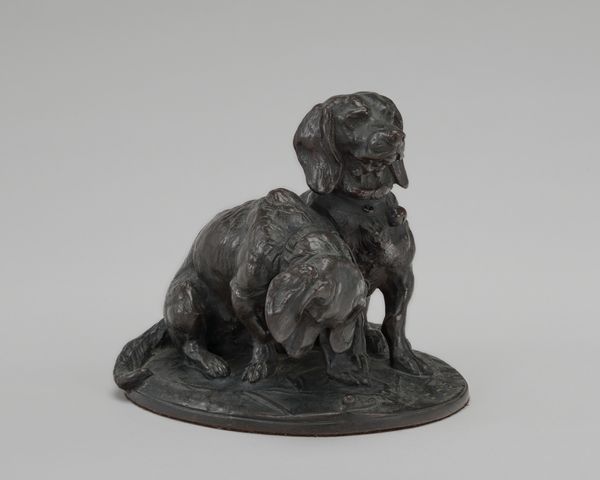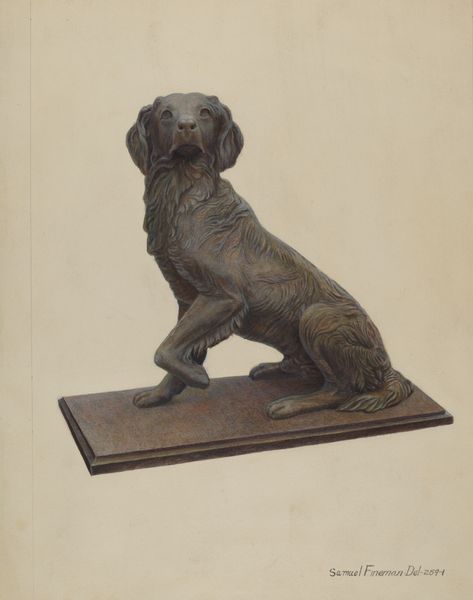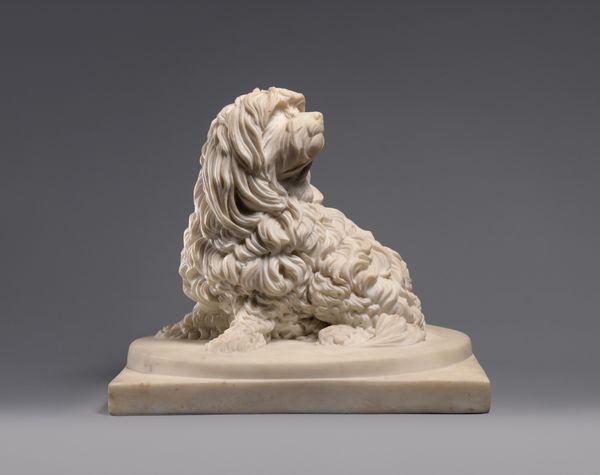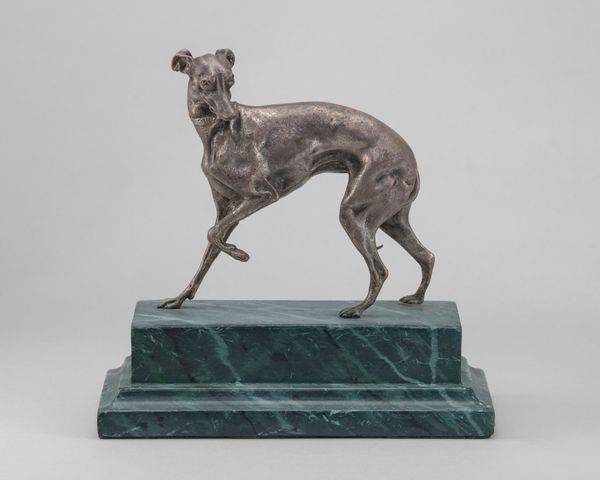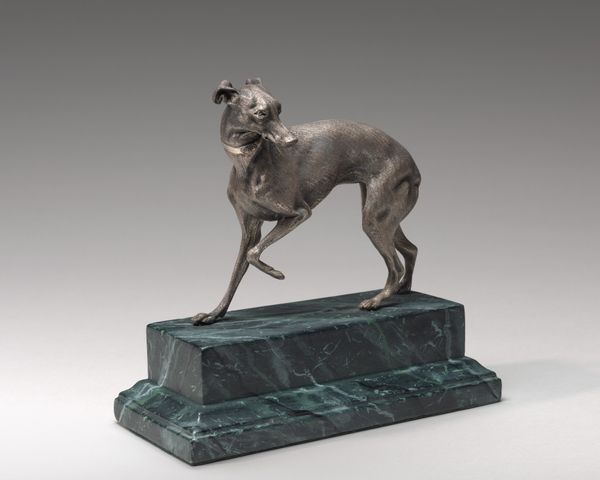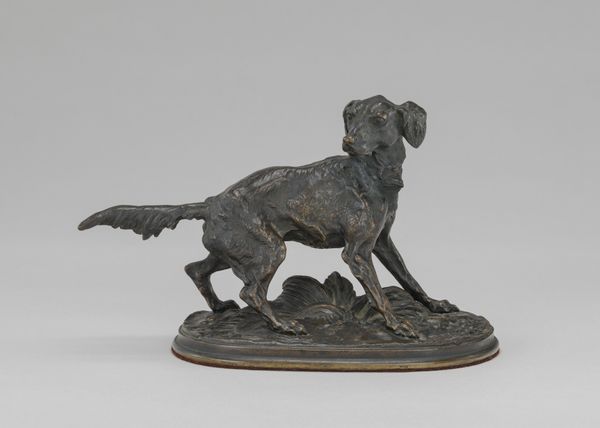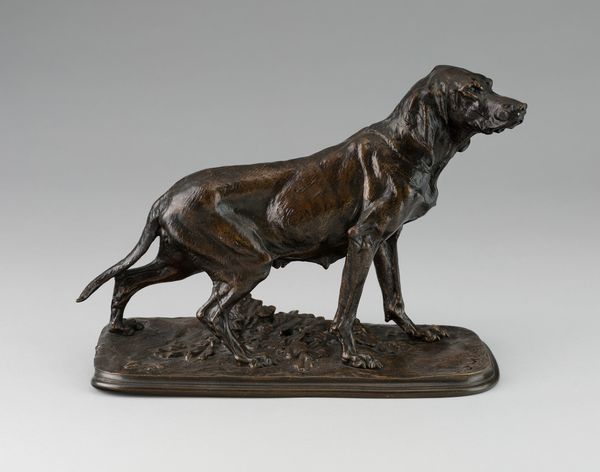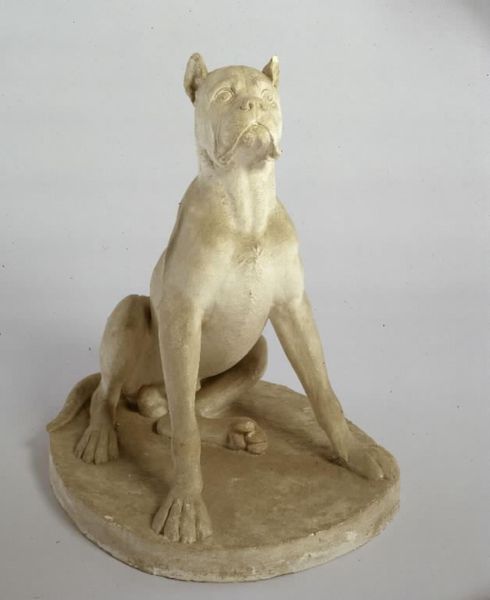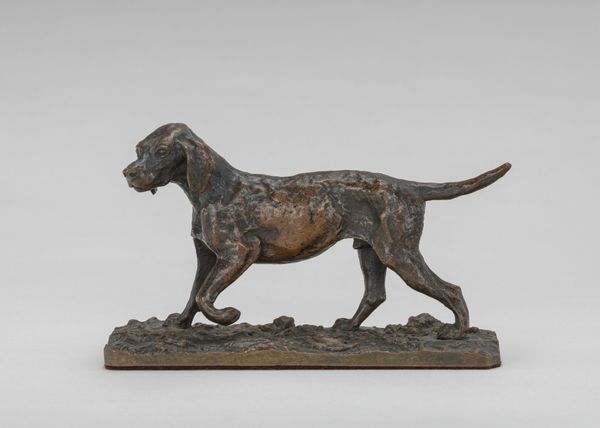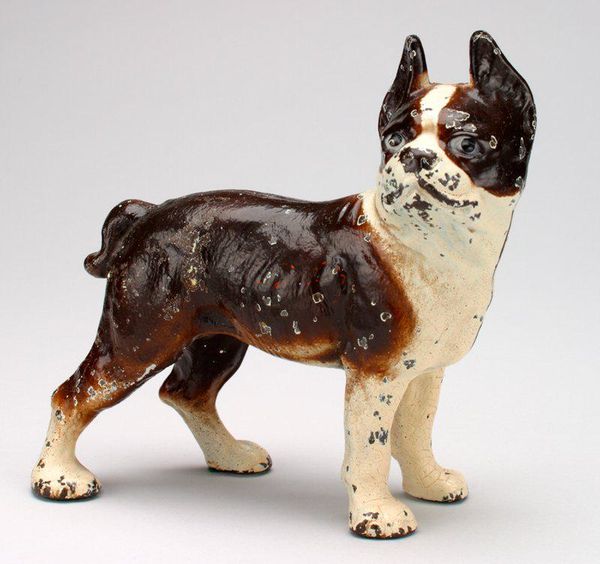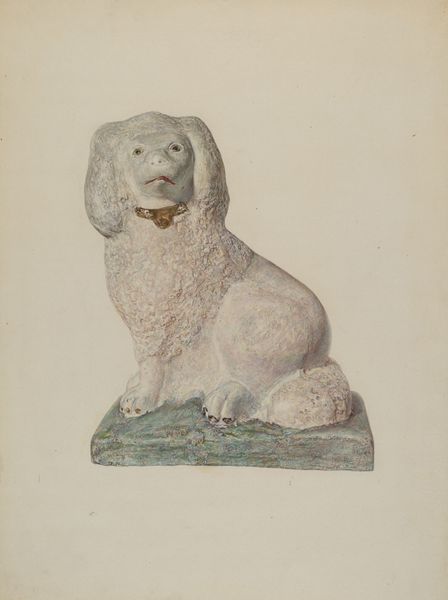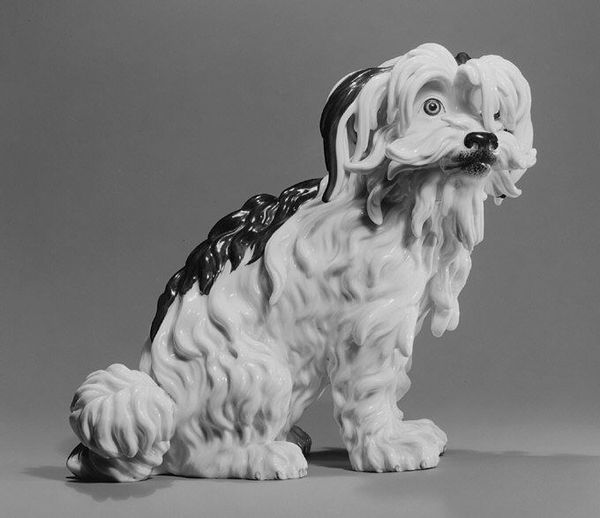
ceramic, porcelain, sculpture
#
portrait
#
sculpture
#
ceramic
#
porcelain
#
sculpture
#
decorative-art
Dimensions: Height: 15 1/2 in. (39.4 cm)
Copyright: Public Domain
Jean-Baptiste Gille created this plaster sculpture of 'Musette, a Maltese dog' sometime in the 19th century in France. It is a charming sculpture, but it raises questions about the role of art, and how taste can reflect social structures. In 19th-century France, the art world was shaped by institutions like the Salon system, and the École des Beaux-Arts, which perpetuated specific academic standards. Sculptures of pets were not typically considered ‘high art’ due to its domestic subject matter. However, the rise of the bourgeoisie brought new tastes and values which slowly influenced art production. The fact that Gille created a sculpture of a dog suggests the shifting social status of pets as companions and status symbols. The plaster material also indicates that Gille was interested in reaching a wider audience than traditional bronze or marble would allow. Examining auction catalogs and domestic records helps us understand the market and the cultural significance of pet portraiture. The sculpture prompts us to think about how institutions can evolve to accommodate new forms of artistic expression driven by changing social conditions.
